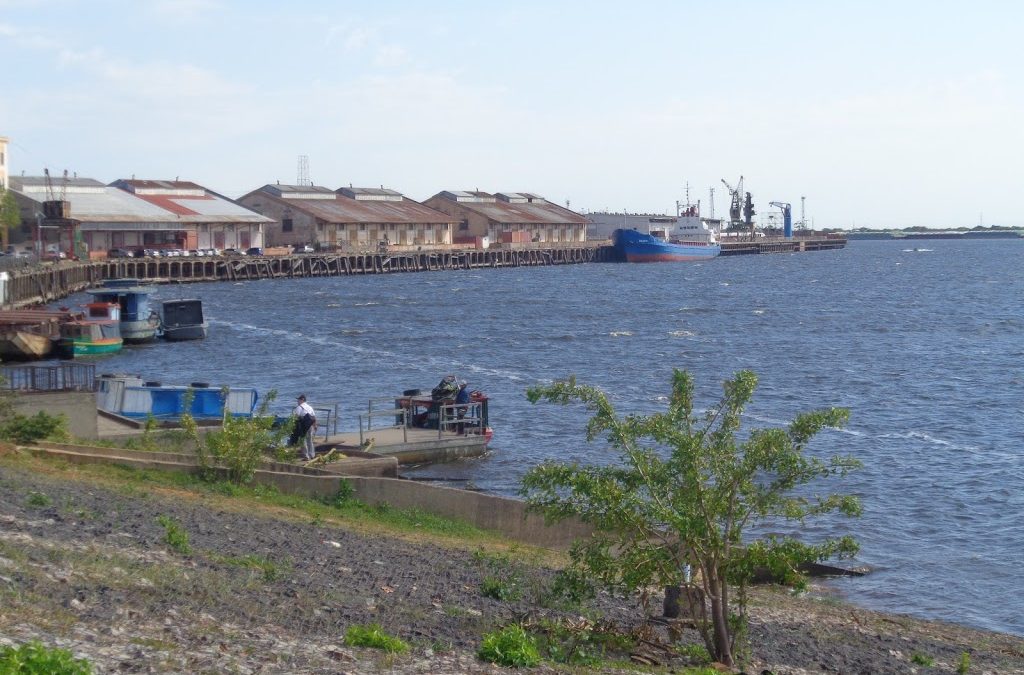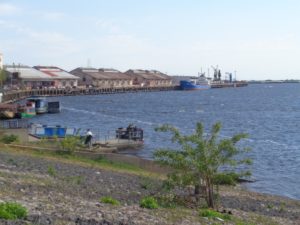Juan de Salazar y Espinosa could never have suspected that the sheltered bay he was about to turn his ship into on 15th August 1537 would become the site of one of the oldest continuely occupied cites in South America and the future capital of a nation as yet unborn.
Asunción bay is a large bay off the River Paraguay and has always formed the heart of the city of Asunción.
Despite being 1000km from the open ocean it is little more than 40 metres above sea level. The river is still large enough at this point to accomodate ocean going vessels and so within the bay a port grew up giving Asunción it’s vital link with the outside world.
The large bay is heavily indented along it’s north shore but to the south the shoreline is much smoother. It is here that the settlement that became the city of Asunción grew up.
With the port being of such importance to the growing settlement it is not surprising that around it are to be found the oldest and most historic streets of Asunción. Here within walking distance of the water are to be found the presidential palace, the cathedral, parliment and many other historic and important buildings.
On the southern side of the bay, not far from it’s enterance is to be found the port of Asunción. It is still a busy working port and a jumping off point for people and cargo heading up and down the River Paraguay.
From there all the way along the south side of the bay runs a recently built boulevard. Built partially on reclaimed land it takes a graceful sweep along the southern shore of the bay. This wide walkway has become a popular place for a stroll looking upwards towards the buildings of the city center and down towards the waters of the bay. It also provides a faster, smoother vehicle journey into the heart of Asunción for those arriving at the airport.
Along the boulevard have been placed several monuments for the sightseer to observe. Asunción written in large steel letters the colours of the national flag and several statues.
Then at the far end of the bay where the road turns northwards an artificial beach has been built, complete with palm sunshades. The soft sands are unusual fairly uncrowded outside of sunny summer afternoons.
The northern shore is less accessable or developed and so not normally somewhere for a visitor to travel.
The bay does sit on the River Paraguay and it is possible without too much difficulty to take a trip to see first hand how grand the river is.
Back towards the port there is a small pier where the small boats that act as river taxis dock. They are primarily for commuters wishing to cross from one side of the river to the other and so are easy to use and inexpensive.
Rather than time tables, once the boat has it’s quota of about a dozen passengers it heads of across the bay.
Being a small boat the pace is leisurely. As such it is a very good place to observe the bay and the view back to Asunción. Once clear of the bay the boat turns north onto the River Paraguay and slowly proceeds to cross to the far shore.
It’s destination is called Chaco ‘i. There is not a whole lot to do there other than take in the view, stretch the legs and have a cold drink before seeking out a boat heading back towards Asunción. The journey is what matters, not the destination.
To this day despite more traffic arriving by road or air the bay of Asunción remains it’s central focus and will continue to do so for many years to come.



Recent Comments